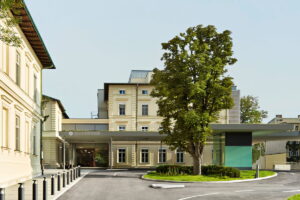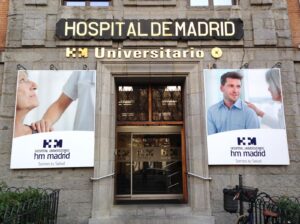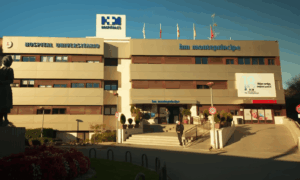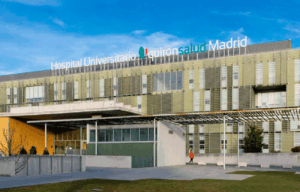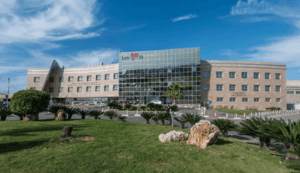Endometriosis
Disease Description
Endometriosis is a pathology in which the endometrium lining the uterus grows beyond its borders. This leads to inflammation and the formation of scar tissue (adhesions and fibrosis) in the pelvic area. The disease may begin with the first menstruation (menarche) and continue until menopause.
According to The World Health Organization, endometriosis is diagnosed in 10% (190 million) of women of reproductive age worldwide.
Symptoms indicating the need for diagnosis and treatment
Endometriosis is a chronic disease, the symptoms of which include acute or chronic pelvic pain, abdominal bloating, nausea, excessive fatigue, and a feeling of anxiety.
Pain is especially intense during menstruation and prevents a woman from performing usual daily activities. Pain may also be present during sexual intercourse, urination, or defecation.
Endometriosis is a common cause of infertility. According to global statistics, 40% of patients who underwent laparoscopy due to inability to conceive were found to have endometriosis.
Diagnosis and treatment methods
Diagnosis
A histological diagnosis of endometriosis is made only after laparoscopy, which is the gold standard for diagnosis according to international guidelines. However, in order to avoid subjecting the patient to surgery, gynecologists in many European clinics make the diagnosis based on a combination of symptoms and non-invasive diagnostic methods (laboratory indicators, ultrasound, ultrasonography, MRI).
Treatment
Gynecologists in leading clinics follow international protocols, in which asymptomatic endometriosis (diagnosed solely by ultrasound findings) is not treated with any medications. In the presence of symptoms, treatment is selected based on the woman’s individual preferences, as well as long-term safety considerations.
To reduce pain, nonsteroidal anti-inflammatory drugs (NSAIDs) are prescribed.
In addition to analgesic therapy, hormonal medications, including contraceptives of the most advanced pharmaceutical forms, are prescribed. The patient can choose the most convenient method of administration: orally (tablets), intrauterinely (IUD), vaginally (ring), subcutaneously (implant), or transdermally (patch).
In some cases, lesions are surgically removed. In Europe, laparoscopic surgery is widely practiced.
Advanced medical centers also use alternative methods of treatment, such as acupuncture (targeting specific points), dietary adjustments, and lifestyle changes.
Innovations of world clinics
The newest approach in endometriosis treatment is immunotherapy, aimed at strengthening the immune system and reducing the inflammatory response. The calmer the body reacts to irritants, the fewer lesions (adhesions and scars) develop.
Top clinics
-
 Istanbul, Turkey Acibadem Altunizade
Istanbul, Turkey Acibadem Altunizade -
 Seoul, South Korea Asan Medical Center
Seoul, South Korea Asan Medical Center -
 Jerusalem, Israel Hadassah Medical Center
Jerusalem, Israel Hadassah Medical Center -
 Petah Tikva, Israel Medical Center “Rabin”
Petah Tikva, Israel Medical Center “Rabin” -
 Istanbul, Turkey Istanbul Florence Nightingale Hospital
Istanbul, Turkey Istanbul Florence Nightingale Hospital -
 Istanbul, Turkey Acıbadem Ataşehir Clinic
Istanbul, Turkey Acıbadem Ataşehir Clinic -
 Dubai, UAE NMC Healthcare
Dubai, UAE NMC Healthcare -
 Istanbul, Turkey Hospital “Memorial Şişli”
Istanbul, Turkey Hospital “Memorial Şişli” -
 Graz, Austria Leech Private Hospital
Graz, Austria Leech Private Hospital -
 Abu Dhabi, UAE Burjeel Hospital Abu Dhabi
Abu Dhabi, UAE Burjeel Hospital Abu Dhabi -
 Vienna, Austria Debling Private Clinic
Vienna, Austria Debling Private Clinic -
 Vienna, Austria Confraternität Private Hospital
Vienna, Austria Confraternität Private Hospital -
 Istanbul, Turkey “Memorial Bahçelievler” Clinic
Istanbul, Turkey “Memorial Bahçelievler” Clinic -
 Incheon, South Korea Gil Medical Center at Gachon University
Incheon, South Korea Gil Medical Center at Gachon University -
 Istanbul, Turkey “Memorial Ataşehir” Clinic
Istanbul, Turkey “Memorial Ataşehir” Clinic -
 Antalya, Turkey Memorial Antalya Hastanesi
Antalya, Turkey Memorial Antalya Hastanesi -
 Barcelona, Spain QuironSalud Barcelona Hospital
Barcelona, Spain QuironSalud Barcelona Hospital -
 Barcelona, Spain Dexeus University Hospital
Barcelona, Spain Dexeus University Hospital -
 Barcelona, Spain Medical Center "Teknon"
Barcelona, Spain Medical Center "Teknon" -
 Barcelona, Spain Sant Joan de Deu Children's Hospital
Barcelona, Spain Sant Joan de Deu Children's Hospital -
 Barcelona, Spain University Hospital Barnaclinic+
Barcelona, Spain University Hospital Barnaclinic+ -
 Madrid, Spain University Clinic HM Madrid
Madrid, Spain University Clinic HM Madrid -
 Madrid, Spain University Hospital HM Monteprincipe
Madrid, Spain University Hospital HM Monteprincipe -
 Gebze, Turkey Anadolu Clinic
Gebze, Turkey Anadolu Clinic -
 Madrid, Spain Quiron Salud University Hospital
Madrid, Spain Quiron Salud University Hospital -
 Seoul, South Korea Samsung Medical Center
Seoul, South Korea Samsung Medical Center -
 Seoul, South Korea Medical Center at Ewha Womans University
Seoul, South Korea Medical Center at Ewha Womans University -
 SNUH
SNUH -
 Ramat Gan, Israel Sheba clinic
Ramat Gan, Israel Sheba clinic







